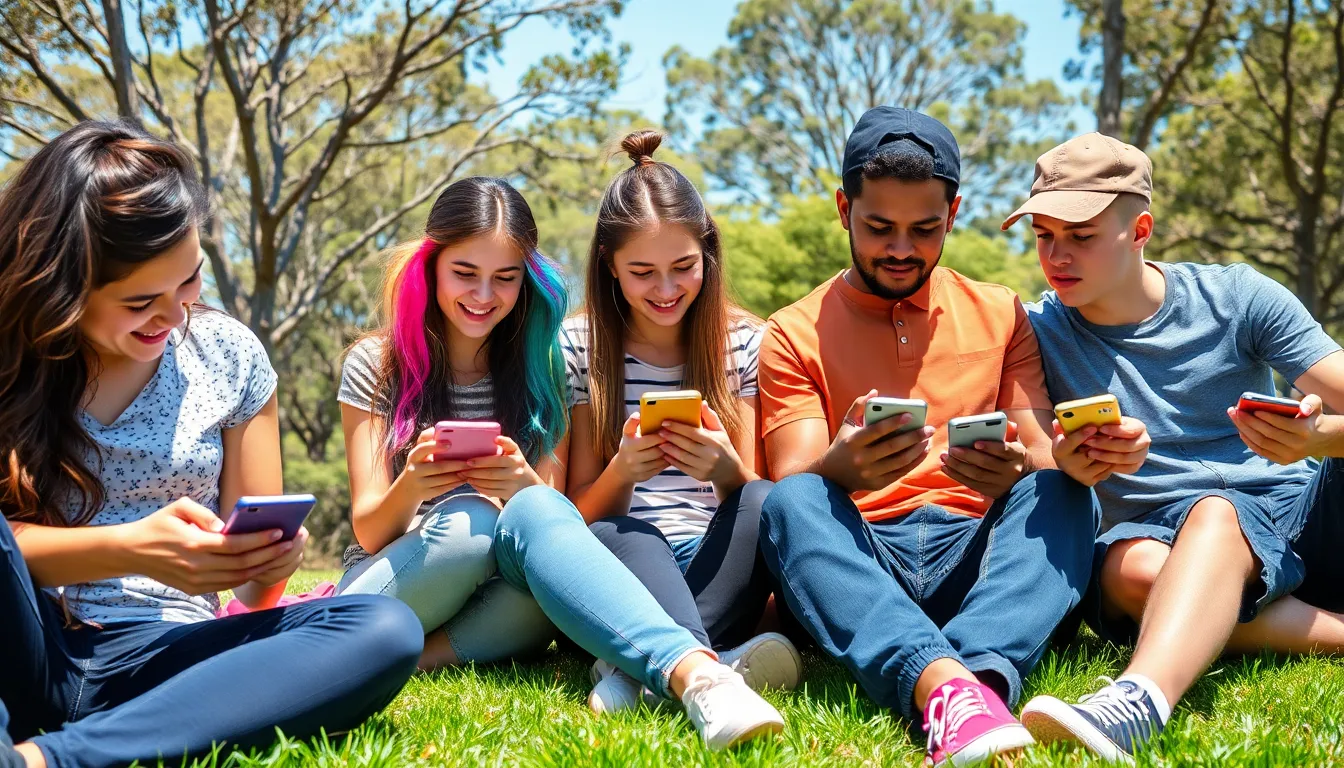In a digital age where likes and shares reign supreme, Australia’s youth find themselves caught in the crossfire of big tech’s latest showdown. As social media giants flex their muscles, young Australians are left wondering if they’re the pawns in a high-stakes game. With algorithms more temperamental than a caffeinated kangaroo, the impact on their social lives is nothing short of seismic.
It’s a wild ride—one moment they’re scrolling through memes, the next they’re grappling with the harsh realities of online scrutiny. As big tech takes aim at the very platforms that shaped their social interactions, the question looms: is this a necessary evolution or just a digital slap on the wrist? Buckle up as we dive into the tumultuous waters of youth social dynamics in Australia, where the stakes are high and the memes are even higher.
Table of Contents
ToggleOverview of Big Tech’s Influence
Big tech companies significantly shape the social landscape for Australian youth. These platforms dominate their daily interactions, often dictating norms and trends. Social media giants like Facebook, Instagram, and TikTok serve as primary means of communication and expression among young Australians. Engagement with these platforms offers enjoyment but also comes with mental health challenges.
Studies reveal that excessive use of social media can lead to anxiety and depression in youth. The constant comparison with peers often exacerbates feelings of inadequacy. Data indicates that approximately 30% of Australian teenagers report feeling pressured to maintain a perfect online image. This pressure influences how they express themselves and connect with others.
Content algorithms curate what users see, further shaping their perspectives. Young people often find themselves trapped in echo chambers, limiting exposure to diverse viewpoints. The shift towards a digital-first social experience has altered traditional friendships, with online interactions frequently replacing face-to-face engagement.
Concerns about privacy and data protection also loom large. Many youth remain unaware of how their data is collected and utilized, raising questions about autonomy and consent. Research shows that half of Australian teens express discomfort with their personal information being shared without consent.
While big tech offers platforms for creativity and connection, the consequences of these interactions warrant scrutiny. These social media platforms continue to evolve, impacting the dynamics of youth relationships in Australia. The conversation around these influences remains crucial as awareness of potential risks increases.
Context of the Australia Youth Social Landscape

Young Australians navigate a complex social landscape shaped by big tech. Social media platforms significantly influence their daily lives.
Social Media Usage Patterns
Australian youth increasingly engage with social media, with platforms like Facebook, Instagram, and TikTok dominating. Reports show that 88% of teenagers actively use these sites, utilizing them for connection and entertainment. Youth actively share content, participate in trending challenges, and explore influencer lifestyles. Daily usage often exceeds three hours, putting online interactions at the forefront of social engagement. Consequently, many prioritize digital communication over traditional methods, altering social dynamics and friendship formations.
Impact on Mental Health
Challenges linked to social media usage emerge prominently in discussions about youth well-being. Research indicates that around 30% of teenagers in Australia feel pressured to portray idealized online personas. Such pressures contribute to increased anxiety and depression, with studies correlating excessive usage with negative mental health outcomes. Youth often struggle with self-esteem issues driven by online comparisons. Personal information sharing amplifies discomfort, as half of young Australians express concerns about data privacy. These factors culminate in a fraught relationship with social media, requiring careful consideration.
Key Incidents of Big Tech Slamming Australia Youth
Big tech’s influence on Australian youth is evident through various critical incidents. Notably, social media policies have shaped online behavior.
Case Studies of Social Media Policies
Instagram’s introduction of the “Hidden Likes” feature aimed to combat mental health issues among users. Although intended to reduce pressure, some teens felt it limited engagement and self-expression. Facebook’s “Teen Safety” initiative also attempted to address privacy concerns, yet many adolescents remain unaware of data usage. TikTok’s algorithm changes prompted discussions around content exposure. Such policies often prioritize user experience but can overlook the deeper implications for mental health and relationships.
Reactions from Youth and Communities
Responses from youth highlight a mix of appreciation and frustration. Many young Australians enjoy the connectivity these platforms offer, yet they express worry over privacy. Local communities have voiced concerns too, with parents advocating for better education on social media use. Campaigns promoting digital literacy have emerged, aiming to empower youth to navigate online challenges. Surveys reveal that 65% of teens want more transparency from platforms. This dialogue emphasizes the need for ongoing discussion about the balance between technology benefits and mental health impacts.
Government and Regulatory Responses
In response to the growing impact of big tech on youth, Australian authorities are implementing various measures. Legislative actions aim to address issues related to privacy, mental health, and age verification.
Legislative Measures
Proposed laws focus on safeguarding the online experiences of teenagers. Current initiatives include regulations mandating clearer data usage disclosures for social media platforms. Additionally, new privacy protections seek to limit data collection from users under 18. Recent studies indicate that nearly half of Australian teens are uncomfortable with how their information is shared. Lawmakers continue to push for stringent accountability on tech companies, addressing both misuse of data and online safety to protect vulnerable youth populations.
Collaboration with Tech Companies
Collaboration efforts with tech firms aim to enhance youth safety online. Initiatives involve industry partnerships to develop responsible social media practices. Shortly, stakeholders are discussing programs that encourage transparency in data handling and algorithmic behavior. Big tech’s involvement in educational campaigns promotes digital literacy among youth, equipping them to navigate online challenges effectively. Recent surveys show that 65% of teenagers want more clarity from these platforms regarding data usage. Engaging in dialogue between regulators and tech companies fosters a healthier online environment for the younger generation.
The influence of big tech on Australia’s youth is undeniable and multifaceted. As young Australians navigate a landscape shaped by social media giants, the balance between connectivity and mental health remains precarious. The challenges they face highlight the urgent need for greater transparency and responsibility from these platforms.
Efforts by authorities to enhance youth safety and promote digital literacy are steps in the right direction. Ongoing dialogue between regulators and tech companies is essential to ensure a healthier online environment. As the conversation evolves, it’s crucial for all stakeholders to prioritize the well-being of the younger generation while fostering creativity and connection in the digital age.




